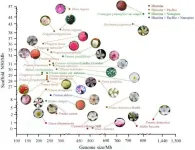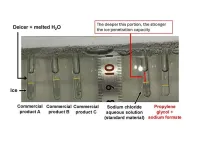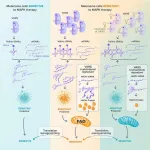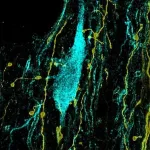(Press-News.org) New University of Virginia School of Medicine research is shedding light on how federal funding helped scientists understand the COVID-19 virus, develop new treatments and deploy lifesaving vaccines in record time.
The UVA Health researchers used advanced “machine learning” – a form of artificial intelligence – to analyze the thousands of scientific publications that resulted from the National Institutes of Health’s deployment of more than $4 billion to combat the pandemic. This analysis allowed the researchers to categorize the types of research the money supported and determine how and where the funding was used to launch clinical trials of treatments and vaccines.
“The COVID-19 pandemic presented an unprecedented public-health challenge. The scientific community needed to rapidly act to come up with solutions to not only combat the virus but understand how we can prevent something like this from happening again,” said Taison D. Bell, MD, of UVA Health’s Division of Pulmonary and Critical Care Medicine and Division of Infectious Diseases and International Health. “The NIH is the largest public funder of biomedical research, so we believe it was vital to study how $4 billion of NIH funding was allocated and used during the pandemic.”
Acting Fast Amid the COVID-19 Pandemic
The UVA researchers used advanced tools they have developed over the last eight years to analyze more than 14,600 scientific publications funded by more than 2,400 federal grants awarded between January 2020 and December 2021. Most of the publications appeared in peer-reviewed scientific journals, but some appeared on what are known as “preprint servers.” Preprint servers allow scientists to share their discoveries with their colleagues quickly, but, unlike peer-reviewed journals, the findings are not vetted by other scientists prior to publication.
UVA’s machine-learning model determined that the top three research topics investigated by COVID-related publications were clinical trials and outcomes research (8.5% of papers), coronavirus-related heart and lung damage (7.3%), and COVID-19 transmission/epidemiology (7.2%). But scientists used the money to investigate not only science directly related to the virus itself, but also related areas such as vaccine hesitancy, effective vaccine distribution, health disparities and general virology (the study of viruses), the UVA researchers found.
Five states received approximately half of the $4 billion in emergency COVID-19 funding, the analysis reveals: North Carolina, Washington, New York, California and Massachusetts. Of the more than 1,800 clinical trial sites testing treatments and vaccines, most, unsurprisingly, were in major urban areas where COVID had stricken many people, the researchers found. (Clinical trials, in general, tend to take place in more urban areas where it is easier to recruit volunteers.)
The Importance of Preprints
In a new scientific paper outlining their findings, the UVA researchers note the rise of preprint servers during the pandemic: “During the pandemic, this fast dissemination of basic science in preprint servers may have supported hypothesis generation and preliminary validation for groups to augment their research,” they wrote. “The higher proportion of cell/molecular studies in preprint servers indicates that researchers may have wanted to expedite access to highly valuable data early in the pandemic to foster further scientific inquiry and collaboration at the basic science level in areas such as SARS CoV-2 transmission and vaccine development. There might also be an element of authors initially submitting to preprints if they believed their work could be subject to a long peer-review process because, perhaps, of a shortage of reviewers in their target journals during the pandemic.”
The UVA researchers are urging additional research to do a deeper dive into what they found and to look at, for example, the results of other COVID funding sources, such as private philanthropy and the Department of Defense. By understanding how COVID research funding was used and the benefits it had, the country will be better prepared to respond to the next pandemic, they say.
“This work is the first to shed light on how billions of federal money was used to study and combat the COVID-19 pandemic,” said researcher Ani Chandrabhatla. “The framework and software we developed to study NIH funding helped us understand where and how funding was deployed and, even more, what topics researchers were studying with that funding.”
Findings Published
The researchers have published their findings in a pair of papers in the scientific journal Open Forum Infectious Diseases. The research team included Adishesh K. Narahari, Anirudha S. Chandrabhatla, Taylor M. Horgan, D. Chris Gist, Mark A. Lantieri, Paranjay D. Patel, Jeffrey M. Sturek, Claire L. Davis, Patrick E. H. Jackson and Taison D. Bell.
To keep up with the latest medical research news from UVA, subscribe to the Making of Medicine blog at http://makingofmedicine.virginia.edu.
END
How $4 billion funded the unprecedented COVID-19 pandemic response
2024-06-07
ELSE PRESS RELEASES FROM THIS DATE:
Advances in omics research of rosaceae
2024-06-07
A research team has provided a comprehensive overview of the applications of omics technologies in Rosaceae plants. The study highlights significant advancements in genome sequencing, transcriptome, proteomics, and metabolomics, shedding light on the genetic regulatory mechanisms underlying crucial traits such as flower color, fragrance, stress tolerance, and fruit quality. This research is invaluable for molecular breeding and improving economic traits in Rosaceae plants, potentially leading to the rapid cultivation of new varieties and germplasm.
The Rosaceae family, with its diverse species and economic importance, is a focus ...
Basic research: Inhibition of epigenetic control enzymes in immune cells as a potential new starting point in cancer immunotherapy
2024-06-07
Immunotherapy is one of the pillars in the fight against cancer and aims to enable the body's own immune system to fight a tumor. A recent study now shows that removing certain enzymes that regulate epigenetic processes from the so-called dentritic cells of the immune system influences their development and thus improves anti-tumor immunity. This finding could lead to new therapeutic strategies in immunotherapy. The study by Cristiano De Sá Fernandes from Maria Sibilia's research group at the Center for Cancer Research and the Comprehensive Cancer Center of MedUni Vienna and Vienna General Hospital was recently published in Cell Reports.
Cancer cells are the body's ...
Tracking greenhouse gas emissions in Chinese value chains with an interprovincial input–output model
2024-06-07
China’s economy has shifted from a stage of high growth to a stage of high-quality development, and the establishment of a dual-carbon target requires profound changes in the industrial structure and energy systems, as well as finding the right direction and pathway for industrial adjustment. While the potential for technological emission reduction continues to be released, the main factor affecting China’s carbon emissions is the speed and intensity of economic transformation and industrial restructuring.
A research team of Dr. GU Alun from Tsinghua University in Beijing, China, recently analyzed the correlations ...
Earth and space share the same turbulence
2024-06-07
Fukuoka, Japan—In a paper published in Geophysical Research Letters, researchers have discovered that the turbulence in the thermosphere exhibits the same physical laws as the wind in the lower atmosphere. Furthermore, wind in the thermosphere predominantly rotates in a cyclonic direction, in that it rotates counterclockwise in the Northern Hemisphere and clockwise in the Southern Hemisphere.
The findings reveal a new unified principle for the Earth’s varied environmental systems and can potentially improve future forecasting of both earth and space weather.
One time or another we’ve tuned in to see the latest weather forecast, and while ...
With programmable pixels, novel sensor improves imaging of neural activity
2024-06-07
Neurons communicate electrically so to understand how they produce brain functions such as memory, neuroscientists must track how their voltage changes—sometimes subtly—on the timescale of milliseconds. In a new paper in Nature Communications, MIT researchers describe a novel image sensor with the capability to substantially increase that ability.
The invention led by Jie Zhang, a postdoctoral scholar in The Picower Institute for Learning and Memory lab of Sherman Fairchild Professor Matt ...
Frozen? Let it melt with efficient new deicer friendly to the environment
2024-06-07
The dangers of frozen roads, airplane engines, and runways are well known, but the use of commercial products often means short-term safety over long-term environmental degradation. Seeking a better product, Osaka Metropolitan University researchers have developed a deicing mixture offering higher performance than deicers on the market while also having less impact on the environment.
The team, made up of graduate student Kai Ito, Assistant Professor Arisa Fukatsu, Associate Professor Kenji Okada, and Professor Masahide Takahashi of the Graduate School of Engineering, used machine learning to analyze ice melting mechanisms of aqueous solutions of 21 salts and 16 organic ...
Aging speeds up and lifetime becomes shorter in animals whose cells ‘believe’ to have too many nutrients, despite following a normal diet
2024-06-07
Cells are signalled to have nutrients in excess, and this leads to malfunction and inflammation in organs such as the pancreas, the liver and the kidneys.
The finding, by CNIO researchers, are published in Nature Aging. It suggests that an intervention on the inflammation alone can relieve symptoms and increase survival.
The research has been conducted on animal models, but comparing their molecular processes with blood samples from people in their seventies indicates that they can be extrapolated to human aging.
The reality of a population who is ageing at an accelerated rate makes it a priority to understand what happens in the body over time, ...
Transfer RNAs at the heart of therapeutic resistance
2024-06-07
An international research team led by scientists from the University of Liège has discovered an interesting new therapeutic target for the treatment of melanoma resistant to targeted therapies. Inhibition of the VARS enzyme could prevent this therapeutic resistance by resensitising tumours resistant to these targeted therapies.
Melanoma is one of the most serious and aggressive forms of skin cancer. When diagnosed early, melanoma is surgically removed. However, once metastases (i.e. secondary distant tumours) have developed, ...
Brain circuits underlying learning from negative experiences
2024-06-07
‘I’m not gonna do this again’, we often say when faced with negative feedback, adverse effects, or disappointing outcomes. Thus, we attempt to learn from such negative experiences. This principle is also a cornerstone of our education system: failing an exam ought to encourage students to do better next time.
How does the brain achieve this type of learning? Positive and negative reinforcement appear as two sides of the same coin in parts of the brain’s valuation system. Notably, some neurons that release the neuromodulator ‘dopamine’ represent outcomes better vs. worse ...
What’s going on in our brains when we plan?
2024-06-07
In pausing to think before making an important decision, we may imagine the potential outcomes of different choices we could make. While this “mental simulation” is central to how we plan and make decisions in everyday life, how the brain works to accomplish this is not well understood.
An international team of scientists has now uncovered neural mechanisms used in planning. Its results, published in the journal Nature Neuroscience, suggest that an interplay between the brain’s prefrontal cortex and hippocampus allows us to imagine future outcomes in order to guide our decisions.
“The prefrontal cortex acts as a ‘simulator,’ ...








